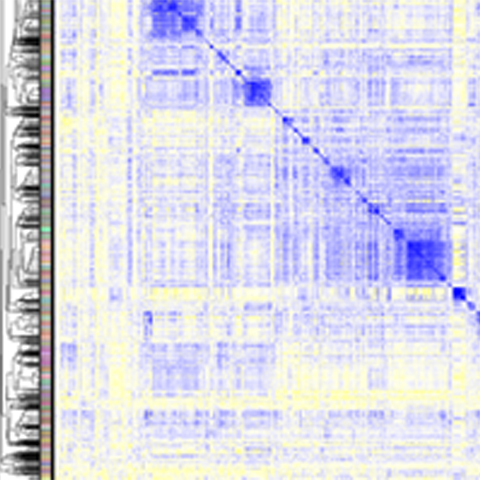Genome Biology
Genome Biology
 Most research labs within Biomedical Sciences utilize genomics technologies to understand aspects of human and animal disease, though some focus more heavily on genome evolution, organization, and patterning. This research takes advantage of the comparative nature of our research interests, spanning dogs, cows, rodent models, and humans. The lab of Charles Danko, for example, uses a variety of computational methods from statistical modeling and machine learning, in combination with molecular approaches, to understand how gene expression patterns are encoded in Metazoan DNA sequence, and how these patterns contribute to evolution, development, and disease. The lab of Adam Boyko specializes in building tools and resources to uncover the genetic basis of canine diseases and adaptations, develop insights into the history and evolution, and understand the role of natural selection, mutation, and breeding practices on the patterning genetic variation in the dog genome. Several labs (Cohen, Schimenti, Sethupathy, Roberson) are using mouse and human models to understand how noncoding RNAs shape the transcriptome in health and disease.
Most research labs within Biomedical Sciences utilize genomics technologies to understand aspects of human and animal disease, though some focus more heavily on genome evolution, organization, and patterning. This research takes advantage of the comparative nature of our research interests, spanning dogs, cows, rodent models, and humans. The lab of Charles Danko, for example, uses a variety of computational methods from statistical modeling and machine learning, in combination with molecular approaches, to understand how gene expression patterns are encoded in Metazoan DNA sequence, and how these patterns contribute to evolution, development, and disease. The lab of Adam Boyko specializes in building tools and resources to uncover the genetic basis of canine diseases and adaptations, develop insights into the history and evolution, and understand the role of natural selection, mutation, and breeding practices on the patterning genetic variation in the dog genome. Several labs (Cohen, Schimenti, Sethupathy, Roberson) are using mouse and human models to understand how noncoding RNAs shape the transcriptome in health and disease.
The Center for Reproductive Genomics focuses on, but is not limited to, gamete biology, with an emphasis on the genetic and epigenetic mechanisms that regulate the formation of viable gametes for sexual reproduction. The strength of the center lies in its strong ties between the basic sciences, based largely on the Ithaca campus of Cornell, and the clinical sciences, focused in Manhattan, NY, within Weill Cornell Medicine.


